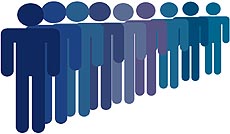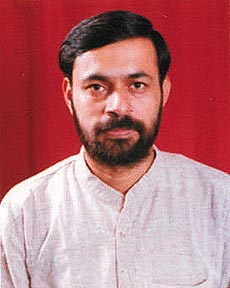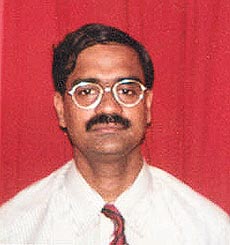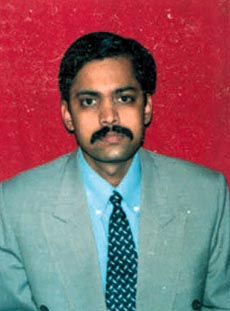Tripti
Nath and R. Suryamurthy discuss the accuracy
(or the lack of it) of the election forecasts made by
psephologists
Poll Pundits or Punters?
IN the run-up to the elections,
the voter gets flattering attention from political
parties and candidates alike. His views are indispensable
and his voting intentions become a subject of scientific
research by pollsters. His opinion is gauged by opinion
poll, exit poll and post-poll analysis.
 In their book, India Decides,
well-known psephologists, David Butler, Ashok Lahiri and
Prannoy Roy have described opinion poll as a tool of
research that has only recently been exploited. The
authors feel that although opinion poll results are
fallible, especially in Indian conditions, they are the
best means of deriving a more accurate picture of the
voting intentions and political attitudes of the Indian
electorate. In their book, India Decides,
well-known psephologists, David Butler, Ashok Lahiri and
Prannoy Roy have described opinion poll as a tool of
research that has only recently been exploited. The
authors feel that although opinion poll results are
fallible, especially in Indian conditions, they are the
best means of deriving a more accurate picture of the
voting intentions and political attitudes of the Indian
electorate.
While opinion polls,
psephologists admit, are fallible in Indian conditions,
exit polls and post polls are relatively accurate. The
difference between the three, according to noted
psephologist Yogendra Yadav, is that of timing. He points
out that other crucial factors include sample size and
sample design and the representativeness of the sample
ensures accuracy.
Naveen Surapaneni, a
psephologist at the Centre for Media Studies, says that
while the opinion poll gives the likely trend of the
voting pattern, the exit poll gives a clearer picture as
it is taken outside the polling booths. "From past
experiences it is evident that voters tell the true and
factual opinion about political parties and their
intentions," he said.
 Yogendra Yadav, a Fellow of the Centre for
Study of Developing Societies, says post poll is an
academic exercise in which a random scientific sample is
drawn from each electoral roll. The researchers visit the
house of the voters after the poll and talk to them in a
relaxed atmosphere. The questionnaires used in the post
poll surveys are extensive. Yogendra Yadav, a Fellow of the Centre for
Study of Developing Societies, says post poll is an
academic exercise in which a random scientific sample is
drawn from each electoral roll. The researchers visit the
house of the voters after the poll and talk to them in a
relaxed atmosphere. The questionnaires used in the post
poll surveys are extensive.
He mentions that post
poll is not an instrument of forecast but a means of
post-mortem for a long-term analysis. The exit polls are
relatively less expensive as the respondents "come
to you and you do not have to go to them".
He says that
pre-election poll suffers from the uncertainty whether
the person will vote or not. "Moreover, you cannot
have a truly representative scientific sample and cannot
truly randomise which is considered the best scientific
method in statistics".
The commercial opinion
poll in India is conducted by Quota Sampling. Yadav says
that the CSDS State Co-ordinators are academics who
engage their research associates and students for the
opinion polls. "The exercise lasts about a week and
involves up to 400 persons."
Titoo Ahluwalia,
Chairman of ORG-MARG, one of the country’s largest
market research companies, in an interview to a national
daily has said that opinion polls in India have proved to
be a pretty reliable indication of the way the political
wind is blowing.
Talking of exit polls in
the same interview, Ahluwalia informs that exit polls are
a relatively recent phenomenon in India and "we are
still at the steep end of the learning curve."
 The first national poll was
carried out by the Indian Institute of Public Opinion
before the 1957 general election. Under the guidance of
Eric da Costa, the father of opinion polling in India,
the institute has covered almost all subsequent
elections. News magazine India Today has also
promoted professional opinion polling in India. Since
1980, it has commissioned market research groups and
psephologists to conduct country-wide opinion polls. The first national poll was
carried out by the Indian Institute of Public Opinion
before the 1957 general election. Under the guidance of
Eric da Costa, the father of opinion polling in India,
the institute has covered almost all subsequent
elections. News magazine India Today has also
promoted professional opinion polling in India. Since
1980, it has commissioned market research groups and
psephologists to conduct country-wide opinion polls.
Opinion polls collect
information by interviewing a sample of the population
whose opinion we are interested in. In a typical election
survey, it means choosing sample constituencies and
polling booths and the selection of a few voters who
resemble the entire population. Their responses are then
recorded. Some researchers use dummy secret ballots for
sensitive questions on voting to encourage an honest
response. All the responses are then collated and
computed.
Election forecasting is
essentially a game of numbers involving two steps. First,
the pollsters conduct an opinion poll to find out the
likely choice of voters. Under our electoral system, the
percentage of votes has no direct relationship to the
percentage of seats won by a party. The second step
involves the translation of votes into seats through
elaborate statistical techniques.
But do opinion polls
influence the voters in their choice of candiadate or
party? A survery conducted by ICSSR-CSDS-India Today in
1996 indicated that an overwhelming majority of ordinary
voters had not read or heard about opinion poll-based
election forecasts.
Yadav says his
assessment after a post-poll survey done by the CSDS
three years ago was that only 0.7 per cent of the voters
were influenced in their voting decisions by opinion
polls.
Psephologists state that
some studies have suggested that there is a bandwagon
effect --- people rushing to support the winner. Others
claim that there is an underdog effect-- - voters backing
the apparent loser. They argue that there is no
consistent evidence to support the contention that
opinion polls have a net influence on voting behaviour
and added that most of the opinion polls are published in
English-language press whose reach is quite limited.
Yadav says, "These
terms have come from the West. In assessing the effect of
the opinion polls, we don’t have sufficient evidence
in this country to prove such hypotheses.’’
Election analysts,
however, admit that the opinion polls help in strategic
voting. If the poll projects the candidate of one’s
preferred party as an apparent loser, the voters may cast
their vote in favour of the second most preferred
candidate.
 G.V.L. Narasimha Rao of the
Development and Research Services (DRS) is of the view
that opinion poll results cannot alter the party leanings
which the electorate acquires over a long period of time.
"The opinion polls, however, do influence the
‘undecided’ voters and it does have an effect
on the morale of the party cadre. The ‘undecided
voter’ influenced by the opinion poll may resort to
tactical voting, thereby increasing or decreasing the
margin of defeat," he said. G.V.L. Narasimha Rao of the
Development and Research Services (DRS) is of the view
that opinion poll results cannot alter the party leanings
which the electorate acquires over a long period of time.
"The opinion polls, however, do influence the
‘undecided’ voters and it does have an effect
on the morale of the party cadre. The ‘undecided
voter’ influenced by the opinion poll may resort to
tactical voting, thereby increasing or decreasing the
margin of defeat," he said.
Naveen Surapaneni,
psephologist at the Centre for Media Studies, agrees with
Rao that only the undecided voters are influenced by the
opinion poll results to some extent. He points out that
sometimes voters change their views about political
parties due to certain events that occur during
campaigning.
Narasimha Rao says
varying results thrown up by different opinion polls are
the result of the sample size and their quantum. He
asserts that opinion polls and exit polls are the most
scientific methods of assessing the mood of the people
and gauging their opinion on the strengths and weaknesses
of the political parties.
One may ask whether
these predictions can be taken as the gospel truth?
Psephologists argue that opinion polls are better
indicators of popular mood than cocktail circles, press
club gossip or hit-and-miss headlines as pollsters try to
speak to ordinary voters to find out how they might vote.
They may or may not succeed in giving an exact forecast
of the number of seats a particular party will gain, but
they give a better idea than anyone else of the direction
in which the wind is blowing.
Political commentator
and historian Mahesh Rangarajan says that people ought to
realise that political commentary is not "P. C.
Sorcar’s magic."
Yogendra Yadav, while
agreeing with Mahesh Rangarajan, says that election
forecasts are unfortunately equated with black magic.
"Either there is a sense of complete awe and
unadulterated admiration, or poll forecasts are looked
upon with hostility and suspicion. I would like people to
look at them as attempts to develop scientific
estimates," he said.
The most significant
pitfalls that opinion surveys and exit polls have to
steer clear of are those connected with sample size and
selection. The question of size is addressed through a
statistical formula applied to the electorate as a whole.
Yet, even with the most careful system of selection, as
by using forms of stratification by region, locality and
class, poll samples often fail to reflect the bewildering
complexities of electoral behaviour in India.
At another level,
opinion surveys and exit polls are known to be fallible
on account of the inherent questionnaire biases. Even the
manner in which a question is posed can often influence
its answer.
Viewed with
"hostility, suspicion, unadulterated admiration and
complete awe,’’ poll forecasts, however,
attract the attention of the voters and politicians
alike.
Poll jargon
Exit poll:
An opinion poll which is conducted on election
day at the exit gate of the polling booth with
the purpose of asking voters whom they voted for.
A technique used to predict the election outcome
before the actual counting.
Random
sample: The ideal textbook technique of
sampling that ensures that the sample is free of
bias. Random here is not haphazard.
Quota sample:
A technique of obtaining a representative
sample by fixing in advance a quota for all
significant sections of the population. It is
cheaper and easier to execute than the random
sample, but compromises on quality.
Weightages: While
analysing the findings, pollsters estimate the
degree by which different sections of society may
have been under- represented or over-represented
in the sample. They can’t change the sample,
but can correct possible distortions
mathematically. That is, by reducing or
enchancing the ‘weight’ of their
answers in the final calculations.
Swing: It
means a change in the percentage of votes for a
party over two points in time. If the BJP’s
vote percentage increases from 20 to 24 per cent,
it means a 4 per cent swing for it. Evolved by
psephologist David Butler for the British
elections, swing has acquired a very simplistic
meaning in the lexicon of the Indian pollsters
|
EC directive
PUBLICATION and
dissemination of results of opinion polls and
exit polls continue to be prohibited by the
Election Commission.
Reiterating the
guidelines issued before the 1998 Lok Sabha poll,
the EC has restrained the publication or
dissemination of results of opinion and exit
polls either in print or electronic media from 5
pm on September 3 till closing of the poll in all
states and union territories on October 3.
The commission
has also directed that organisations and agencies
conducting opinion or exit polls must indicate
the sample size of the electorate covered by such
polls and the geographic spread of the survey.
The polls should
give details about the methodology followed by
the percentage of errors, the professional
background and the experience of the organisation
and key professionals involved in the conduct and
analysis of the polls, according to the EC order.
Similar
directions issued by the EC last year were
challenged in a petition filed by Frontline
magazine. The case is still pending in the
Supreme Court. While declining to pass an interim
order, a three-Division Bench comprising Justice
M. M. Punchhi, Justice B. N. Kirpal and Justice
M. Srinivasan observed, "If we grant a stay,
we will be allowing the petitions and similarly
if we deny the stay, we will be dismissing them.
We are doing neither, we are simply adjourning
the matter. The Press might take risks."
Yogendra Yadav
says he is in favour of the ban on publication of
results of exit poll. "Publication of exit
poll results should be banned till the last
person has cast his vote. There should be some
sanctity of the vote."
Yadav, however,
feels that the Election Commission’s order
banning publication and dissemination of results
of opinion polls from September 3 to October 3
will deprive the voter access to balanced and
correct information. "This means, nothing
will come out between September 3 and October 3.
It is a rather extreme ban. They could have
imposed the ban in phases," he said.
G. V. L.
Narasimha Rao has no objection to the EC
directive banning the publication of opinion poll
results. He is, however, opposed to a blanket ban
as opinion poll is another means of disseminating
information about what what people think about
political parties and the issues they think are
important. "Opinion polls are similar to
what is written in newspapers, magazines and
discussed in television. If opinion can be
expressed about the outcome of the elections in
these media then opinion and exit polls should
also enjoy the same rights," he argues.
Apart from the
Election Commission, the Press Council of India
has laid down guidelines on "pre-poll and
exit poll" surveys. Justice P.B.Sawant,
Chairman of the Press Council of India and
President of the World Association of Press
Councils, laying down guidelines for the media,
stated that newspapers should neither allow their
forum to be used for distortions and
manipulations of the elections nor allow
themselves to be exploited by interested parties.
The Press
Council, therefore, suggests that whenever
newspapers publish pre-poll surveys, they should
take care to preface them conspicuously by
indicating the institutions which have carried
such surveys, the individuals and organisations
which have commissioned the survey,the method of
selection of the sample and the possible margin
of error in the findings.
The PCI has said
that in order to ensure that the voters are not
influenced by any external factors, the
publication of exit poll surveys should be
deferred till after the last poll is held.
|
| Accuracy of 1998 Lok Sabha
elections forecast |
| Seats forecast |
BJP allies |
Congress allies |
NF+LF |
Others |
| DRS |
249 |
155 |
102 |
37 |
| Outlook/AC
Nielsen |
238 |
149 |
123 |
33 |
| India
Today/CSDS |
214 |
164 |
127 |
38 |
| Frontline/CMS |
225-235 |
145-155 |
120-130 |
32-52 |
| Acutal result |
252 |
166 |
96 |
23 |
| Forecast of 1999 Lok Sabha
elections |
| Seat forecast |
BJP allies |
Congress allies |
NF+LF |
Others |
| Timespoll/DRS |
332 |
138 |
73 |
|
| Outlook/CMS |
279-289 |
152-162 |
63-68 |
34-39 |
| India
Today/Insight |
332-336 |
132-146 |
|
|
| (The
agencies have conducted the survey almost a month
before the actual date of voting. They would
further update the seat forecast in subsequent
surveys a few days before the actual polling. The
findings of those surveys might give more
accurate trend of the voters perception than
those surveyed earlier. These polls only suggest
the mood of the people and the popular trend at
the time of the survey.) |

|

